Graphic overlay printing is a process which makes user interfaces, control panels, and electronic devices. Over the years, advancements in technology and materials have led to the development of new techniques that enhance the functionality, durability, and aesthetic appeal of graphic overlays.
 Digital Printing Technology
Digital Printing Technology
Digital printing has revolutionised the graphic overlay industry by providing high-quality, precise, and customisable prints. Unlike traditional screen printing, digital printing does not require the creation of screens for each design, making it ideal for short runs and prototyping.
This technique allows for the production of overlays with intricate designs, vibrant colours, and fine detail. One big advantage of digital printing is its ability to produce overlays with photographic-quality images and complex graphics. This makes it a great choice for applications where visual appeal is a factor. Additionally, digital printing offers rapid turnaround times, enabling manufacturers to respond quickly to market.
Click Here to view our library of screen-printed Graphic Overlays.
UV Printing
UV printing is another technique that has gained popularity in graphic overlay production. This involves using ultraviolet light to cure or dry the ink as it is printed. The result is a highly durable print that resists fading, scratching, and chemical exposure.
UV printing offers several benefits, including superior colour accuracy and consistency, as well as the ability to print on a wide range of substrates, including plastics, glass, and metals.
In-Mould Decoration (IMD)
In-Mould Decoration (IMD) is an advanced technique that integrates the graphic overlay directly into the moulding process of plastic components. This method involves printing the design onto a film, which is then inserted into the mould. During the injection moulding process, the film fuses with the plastic, creating a seamless, durable overlay.
IMD offers several advantages, including enhanced durability, as the graphics are protected within the moulded part, making them resistant to wear and tear. This technique also allows for the creation of complex, three-dimensional shapes and designs that would be challenging to achieve with traditional methods. IMD is widely used in automotive interiors, consumer electronics, and medical devices.
 Embossing, Debossing and Texturing
Embossing, Debossing and Texturing
These techniques are used to create raised or recessed designs on graphic overlays. Embossing raises the design above the surface, while debossing creates an indented effect. These techniques add a tactile element to the overlays, enhancing the user experience.
Embossed and debossed overlays are commonly used in applications, such as control panels and keypads. These techniques can be combined with other printing methods to create visually appealing and functional overlays that really stand out.
Selective texturing is an innovative technique that involves applying textures to specific areas of a graphic overlay. This can be achieved through screen printing or digital printing and adds a unique tactile dimension to the overlay. Selective texturing can enhance grip, reduce glare, and provide visual contrast, making it both a functional and aesthetic enhancement. This technique is particularly useful in industries such as automotive, aerospace, and medical devices. By strategically applying textures, manufacturers can improve both usability and durability.
Transparent Windows and Display Windows
Incorporating transparent windows or display windows into graphic overlays is a technique that has become increasingly popular, especially with the rise of touchscreens and displays in electronic devices. These windows are typically made from clear, durable material such as polycarbonate or acrylic, and are integrated into the overlay design.
Transparent windows allow users to view and interact with underlying displays or indicators without compromising the integrity of the overlay. This technique is widely used in consumer electronics, medical devices, and industrial equipment.
Anti-Microbial Coatings
With growing concerns about hygiene and cleanliness, especially in medical and food-related industries, the use of anti-microbial coatings on graphic overlays has become an important innovation.
These coatings inhibit the growth of bacteria, fungi, and other microbes on the surface of the overlay, reducing the risk of contamination and promoting a healthier environment. Anti-microbial coatings are applied during the printing process and provide long-lasting protection without affecting the appearance or functionality of the overlay. This is ideal for applications in healthcare, food processing, and public facilities where hygiene is a priority.
At Evans Graphics, we are committed to leveraging the latest ideas in graphic overlay printing to deliver exceptional products and ensure that we provide overlays that not only look impressive but also perform reliably, even in the most demanding environments.



